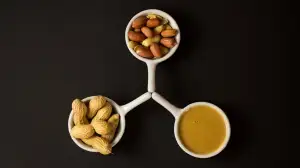Perfectly Boiled Cabbage: Discover the Ideal Cooking Time for Tender and Flavorful Results

- Step 1: Prepare the cabbage by removing the outer leaves and cutting it into wedges or shredding it
- Step 2: Fill a large pot with water and bring it to a boil
- Step 3: Add the cabbage to the boiling water and cover the pot
- Step 4: Boil the cabbage for approximately 5-7 minutes for wedges or 3-5 minutes for shredded cabbage
- Step 5: Check the tenderness of the cabbage by inserting a fork or knife into a wedge or a piece of shredded cabbage
- Step 6: Once the cabbage is tender, remove it from the heat and drain the water
- Step 7: Serve the boiled cabbage as a side dish or use it in your favorite recipes
Cooking cabbage may seem like a simple task, but achieving the perfect texture and flavor requires knowledge of the ideal cooking time. Boiling cabbage for too long can result in mushy and tasteless leaves, while undercooking it can leave it tough and unappetizing. By understanding the proper cooking time, you can ensure that your boiled cabbage is tender, flavorful, and a delightful addition to any meal. In this article, we will guide you through the steps to achieve perfectly boiled cabbage every time. So let's dive in and discover the secrets to mastering this humble yet delicious vegetable!
Step 1: Prepare the cabbage by removing the outer leaves and cutting it into wedges or shredding it
Step 1: To prepare the cabbage for boiling, start by removing the outer leaves. These leaves can be tough and may not cook evenly. Once the outer leaves are removed, cut the cabbage into wedges or shred it, depending on your preference. Wedges are great for a more substantial texture, while shredded cabbage cooks faster and is perfect for salads or coleslaw. Make sure to wash the cabbage thoroughly before cutting to remove any dirt or debris.
Step 2: Fill a large pot with water and bring it to a boil
Step 2: Fill a large pot with water and bring it to a boil. To properly cook cabbage, you'll need a sufficient amount of water in a pot. Choose a pot that is large enough to accommodate the cabbage wedges or shredded cabbage comfortably. Fill the pot with enough water to completely submerge the cabbage. Place the pot on the stove and turn the heat to high. Allow the water to come to a rolling boil, which usually takes about 10-15 minutes depending on your stove's heat settings. Boiling the water ensures that the cabbage cooks evenly and quickly, resulting in tender and flavorful results.
Step 3: Add the cabbage to the boiling water and cover the pot
Step 3: Add the cabbage to the boiling water and cover the pot. Carefully place the prepared cabbage wedges or shredded cabbage into the pot of boiling water. Make sure that there is enough water to fully submerge the cabbage. Covering the pot with a lid will help retain heat and ensure even cooking. Allow the cabbage to cook undisturbed for the recommended cooking time, as this will help infuse it with flavor and maintain its texture. Keeping the pot covered will also prevent any essential nutrients from escaping through steam.
Step 4: Boil the cabbage for approximately 5-7 minutes for wedges or 3-5 minutes for shredded cabbage
Step 4: Boil the cabbage for approximately 5-7 minutes for wedges or 3-5 minutes for shredded cabbage. The cooking time may vary depending on the size and thickness of the cabbage pieces. Boiling the cabbage for too long can result in mushy and overcooked cabbage, while undercooking it will leave it tough and raw. To achieve the perfect balance, keep a close eye on the cabbage as it boils. Test its tenderness by inserting a fork or knife into a wedge or a piece of shredded cabbage. It should be soft but still have a slight crunch. Adjust the cooking time accordingly, adding an extra minute or two if needed. Remember, achieving tender and flavorful boiled cabbage is all about finding that sweet spot in cooking time.
Step 5: Check the tenderness of the cabbage by inserting a fork or knife into a wedge or a piece of shredded cabbage
Step 5: To check the tenderness of the cabbage, carefully insert a fork or knife into a wedge or a piece of shredded cabbage. If it goes in easily and the cabbage feels soft, it is likely cooked to perfection. Avoid overcooking as this can result in mushy cabbage. The texture should be slightly crisp yet tender. Keep an eye on the cooking time to ensure your cabbage retains its vibrant color and nutrients.
Step 6: Once the cabbage is tender, remove it from the heat and drain the water
Step 6: Once the cabbage is tender, carefully remove it from the heat and drain the water. This step is crucial to prevent overcooking and maintain the desired texture of the cabbage. Using a pair of tongs or a slotted spoon, transfer the boiled cabbage to a colander or strainer. Allow excess water to drain for a few minutes, gently shaking the colander if needed. Be cautious not to squeeze or press down on the cabbage too much, as this can cause it to become mushy. The drained boiled cabbage is now ready to be served or used in your favorite recipes.
Step 7: Serve the boiled cabbage as a side dish or use it in your favorite recipes
Step 7: Serve the boiled cabbage as a side dish or use it in your favorite recipes. Once the cabbage is tender and flavorful, it is ready to be enjoyed. As a simple side dish, season it with salt, pepper, and a drizzle of olive oil for a healthy and tasty addition to any meal. You can also get creative and incorporate the boiled cabbage into various recipes. Add it to stir-fries, soups, or stews for an extra dose of nutrients and texture. It can even be used as a filling for dumplings or added to salads for a refreshing twist. The possibilities are endless, so don't hesitate to experiment with different flavors and combinations. Boiled cabbage is versatile and can elevate your dishes to new heights!
Conclusion: Mastering the cooking time for boiled cabbage is essential for achieving perfectly cooked and delicious results. By following the recommended cooking times of approximately 5-7 minutes for wedges and 3-5 minutes for shredded cabbage, you can ensure that your cabbage is tender yet still retains its flavor and texture. Overcooking can lead to mushy cabbage, while undercooking may result in a tough and unappetizing dish. So, take the time to monitor the tenderness of your cabbage by using a fork or knife, and once it reaches the desired level of tenderness, remove it from the heat promptly. Whether you serve it as a side dish or incorporate it into your favorite recipes, mastering the cooking time will elevate your boiled cabbage to new heights of culinary excellence.
Published: 20. 11. 2023
Category: Food



